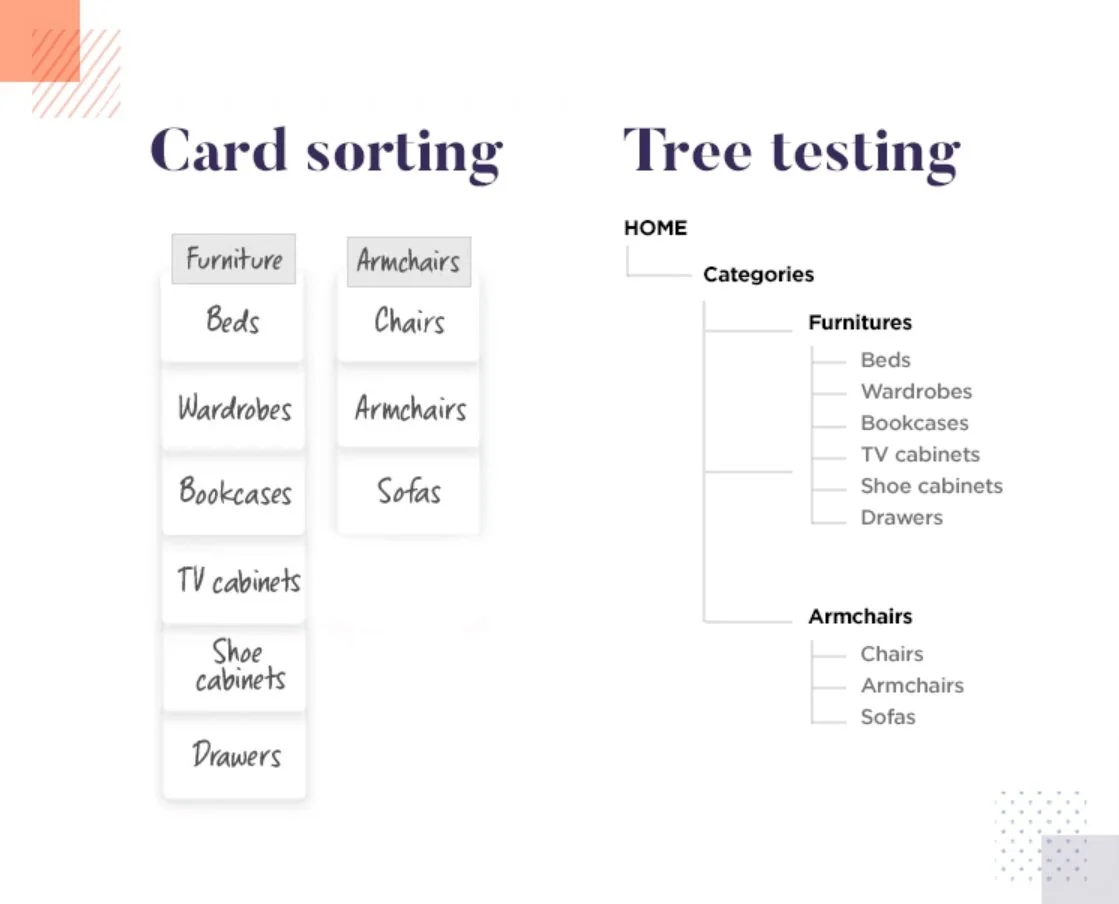User Testing on a Budget: A Practical Guide for Organizations
Understanding User Insights
The digital landscape is constantly evolving, and understanding how users interact with your products and services has never been more crucial. User insights serve as the compass that guides digital strategy, providing valuable data about user behavior, preferences, and pain points.
These insights typically manifest in three key ways. Behavioral insights track and analyze concrete user actions, from clicks and scrolls to navigation paths. Emotional insights measure user sentiment through feedback and satisfaction ratings, helping organizations understand how their users feel about their experiences. Cognitive insights delve into users' decision-making processes, revealing where they might encounter confusion or clarity within your product.
The Business Case for User Research
Steve Krug's famous principle "Don't make me think" remains fundamental to good design. When users don't have to think about their next action, it means the design is intuitive and aligns with their expectations. Good design often goes unnoticed, while poor design stands out—and usually not in a way that benefits your organization.
Studies consistently show that putting users first delivers significant benefits to organizations. Early user research can significantly reduce risk by identifying issues before they become expensive problems to fix. It also tends to boost conversion rates across all key performance indicators. Perhaps most importantly, when users have positive interactions with a product, they're significantly more likely to engage with it and return to it in the future.
Choosing the Right Research Approach
When it comes to user research, organizations often grapple with choosing between quantitative and qualitative methods. Both approaches offer unique advantages and serve different purposes in understanding user behavior.
Quantitative Research
Quantitative research focuses on gathering data from large groups to answer "how much" and "how many" questions. This approach provides statistical insights about user behavior patterns, typically through analytics tools that track metrics like page views, bounce rates, and conversion rates. Analytics serves as an excellent starting point for gathering user insights, offering concrete data about where, when, and how behaviors occur.
Qualitative Research
Qualitative research, on the other hand, helps answer the crucial "why" questions behind user behavior. Through methods like usability testing, interviews, and surveys, qualitative research provides deeper insights into user motivations, attitudes, and pain points. This approach helps organizations understand the reasoning behind the numbers they see in their quantitative data.
Which Approach Is Best?
The most effective research strategy typically combines both approaches. While quantitative data shows you what's happening on your site, qualitative insights help you understand why it's happening. The choice between methods should be driven by your research goals, resource availability, and the stage of your design process. Both approaches can be implemented cost-effectively, and together they provide a comprehensive understanding of your users' needs and behaviors.
Cost-Effective Research Methods
The good news is that gathering valuable user insights doesn't require expensive enterprise tools or large research teams. Most organizations already possess the essential tools needed to start gathering user insights. Your website, social media accounts, and email lists from newsletters or contact forms provide valuable starting points. Free survey tools like Google Forms and video conferencing software for user interviews complete the basic toolkit needed to begin meaningful research.
For reaching potential users, online community groups and Facebook groups often prove invaluable. Don't underestimate the power of referral requests and targeted social media posts, which can help you reach specific demographics at minimal cost.
Surveys and Feedback
Surveys remain one of the most cost-effective ways to gather user insights. Google Forms provides a completely free solution, while platforms like Survey Monkey and Typeform offer free tiers with reasonable limitations. Some tools offer surveys to popup directly on your website, however Response rates are typically higher for email surveys compared to on-site surveys
For surveys:
Send dedicated survey emails rather than embedding surveys in newsletters
Keep the total number of questions low to prevent abandonment
Start with closed-ended questions (multiple choice) for easier data analysis
Save open-ended questions for the end when users are more invested
Session Recording and Heat Maps
Most organizations start their research journey with session recording and heat mapping tools. Platforms like Hotjar and Mouseflow offer free plans that allow you to:
Watch real user sessions to understand navigation patterns
View scroll maps showing content engagement
Analyze click maps revealing interaction patterns
Generate heat maps highlighting attention spots
Tree Testing and Card Sorting
Information architecture is crucial for website success, ensuring your site structure makes sense to users. While free tools exist for testing, they often have limited capabilities. Professional tools like Optimal Workshop offer comprehensive features and can be subscribed to monthly as needed, making them cost-effective.
Tree testing helps validate your navigation structure by presenting users with a text-based version of your site hierarchy. Users are asked to complete tasks by navigating through this structure, revealing whether your site's organization and terminology make sense. Tools like Optimal Workshop offer free plans for small-scale testing.
Card sorting helps understand how users would organize your content. While particularly valuable for content-heavy sites, even smaller sites can benefit from understanding how users categorize information. Users organize content items into groups that make sense to them, providing insights into intuitive content organization..
Usability Testing and Interviews
Usability testing provides valuable insights by directly observing users interacting with your site. Testing can be moderated, where a facilitator guides participants in real-time via tools like Zoom or Google Meet, or unmoderated, where users complete tasks independently using platforms like Userbrain or UserTesting.com both of which offer free plans with limited features.
When conducting usability tests:
Choose between moderated (live facilitation) or unmoderated (self-guided) testing based on your needs.
Start with a clear test plan and specific tasks
Recruit 3-5 users for each round of testing
Encourage participants to think aloud while completing tasks
Record and analyze sessions to uncover patterns and pain points.
Interviews can further complement usability testing by exploring user needs, motivations, and experiences in greater depth, helping to contextualize usability findings.
Maximizing Impact Through Incremental Improvements
User research isn't just for major redesigns. Small, incremental improvements can significantly enhance user experience without requiring large investments. Focus on optimizing key areas like form design, navigation menus, and critical user paths. These targeted improvements often yield substantial benefits while staying within budget constraints.
Conclusion
Effective user testing doesn't require enterprise-level budgets. By strategically leveraging free tools, existing resources, and thoughtful approaches to recruitment, organizations can gather valuable insights that drive meaningful improvements in their digital presence.
Remember that perfect data isn't the goal—gathering enough insights to make informed decisions about your user experience is what matters. Start small, focus on actionable insights, and gradually expand your research capabilities as resources allow.
List of Resources
Survey Tools
Survey Monkey (Free up to 10 questions)
Google Forms (Free)
Google Surveys (Price range from 10 cents to $1 per response)
SurveyGizmo (Free up to 3 surveys)
Typeform (Free 3 surveys/month, up to 10 questions)
Survicate Free up to 100 responses/month)
Survey Legend (Free up to 3 surveys)
YesInsights (7 day Trial)
Usability Testing Tools
Qualtrics (Free up to 10 questions)
UsabilityHub (Free up to 2min/test)
UXtweak (Free Starter plan)
Lookback (14 day trial)
UserTesting (Free trial, run a free test)
Userbrain (Free Test with your own users)
Loop11 (14 day trial)
FocusVision(Free trial)
Session Recording Tools
Hotjar (Free with limited data storage)
Mouseflow (Free 1 website, 500 recordings/month)
CrazyEgg(30 day Trial)
Card Sort/Tree Testing Tool
Optimal Workshop (Free up to 30 cards sort, 10 responses p/study)
Maze (Free 1 study per month 5 seats)
UX Metrics (all pro features free for max 3 participants)




